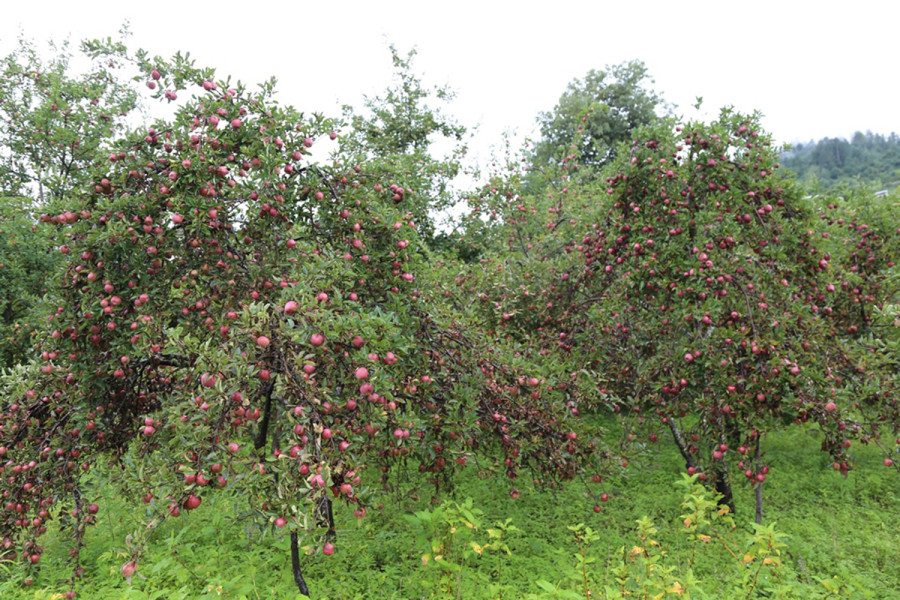Money
Buoyed by apple sales, farmers in Mugu turn croplands into orchards
With the expansion of rural transportation, traders have been hauling apples from the district to sell the fruit in cities such as Nepalgunj, Surkhet and Kathmandu.
Raj Bahadur Shahi
A decade ago, Hari Rokaya of Talcha farmed three cereal crops in his plot, but now he has turned the patches into an apple orchard.
Rokaya who harvested traditional crops to make ends meet for just three months in a year now earns half a million from selling apples, every year.
Rokaya’s neighbour, Karna Bahadur Bham has also followed suit and planted 300 apple trees in what once was cropland. Bham garners Rs 400, 000 annually by selling the sweet-fruit in the local market.
[Related Story: How climate change is altering apple farming across Mustang]
Traditional crop farmers have started growing apples because of higher returns, allowing them to cover living expenses.
Expansion of rural road network through various settlements in Mugu has allowed the farmers to cash in from apple farming as traders have started travelling to the villages to buy apples.
Apple prices have also increased each year, motivating locals to take up the occupation, which has led to a rise in apple orchards in settlements such as Maitu, Talcha, Pina, Jyari, Kotila among others.
Farmers say that planting apple trees comes with double benefits as they can also grow potatoes, green beans and other vegetables in the orchards.
Rokaya who has planted 450 trees which produce 3,000 kilograms of the fruit every year is happy to see a good output this year.
“The harvest is better than previous years, and I expect to earn more, this time,” said Rokaya.
With the expansion of rural transportation, traders have been hauling apples from the district to sell the fruit in cities such as Nepalgunj, Surkhet and Kathmandu.
According to Banche Mahatara, apple orchards have bloomed in patches on the roadside, and because of the rise in demand, apples grown in regions neighbouring the district headquarters are sold out within a short span following harvest.
“The production of apple is increasing every year because of favourable rainfall and ample snow,” said Mahatara. “And with vehicles reaching our orchards, we have taken apple farming as an occupation.”
Local representatives in the region say that the farmers are gradually becoming self-reliant as apple farms are profitable.
According to Nanda Lal Baduwal, a local ward chair, farmers who grew traditional crops in the majority of the settlements had always faced risks of drought, hail and crop diseases owing to lack of irrigation facility.
“Such risks in traditional farming have prompted many to venture into apple farming,” said Baduwal. “Apart from improving living standards, the apple orchards have also spared the youth from the hassles of foreign immigration, and they are even buying houses in district headquarters from the money earned from apple farming.”
At present, the district is producing 3500 metric tonnes of apples annually, the Agriculture Knowledge Centre data show.
“Farmers of rural areas who have taken up commercial apple farming are earning a minimum of Rs 200,000 per annum, and that has helped them invest in their children’s education while running their houses,” said Sukiram Nepali, chief of Agriculture Knowledge Centre.




 17.12°C Kathmandu
17.12°C Kathmandu.jpg)















